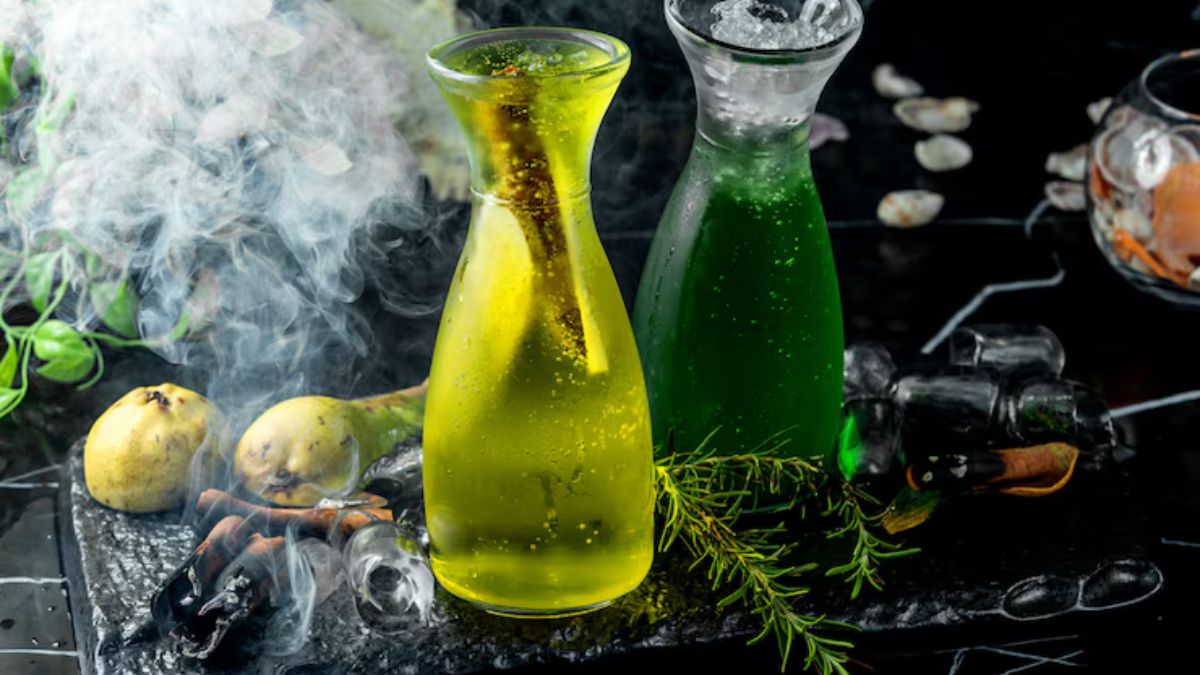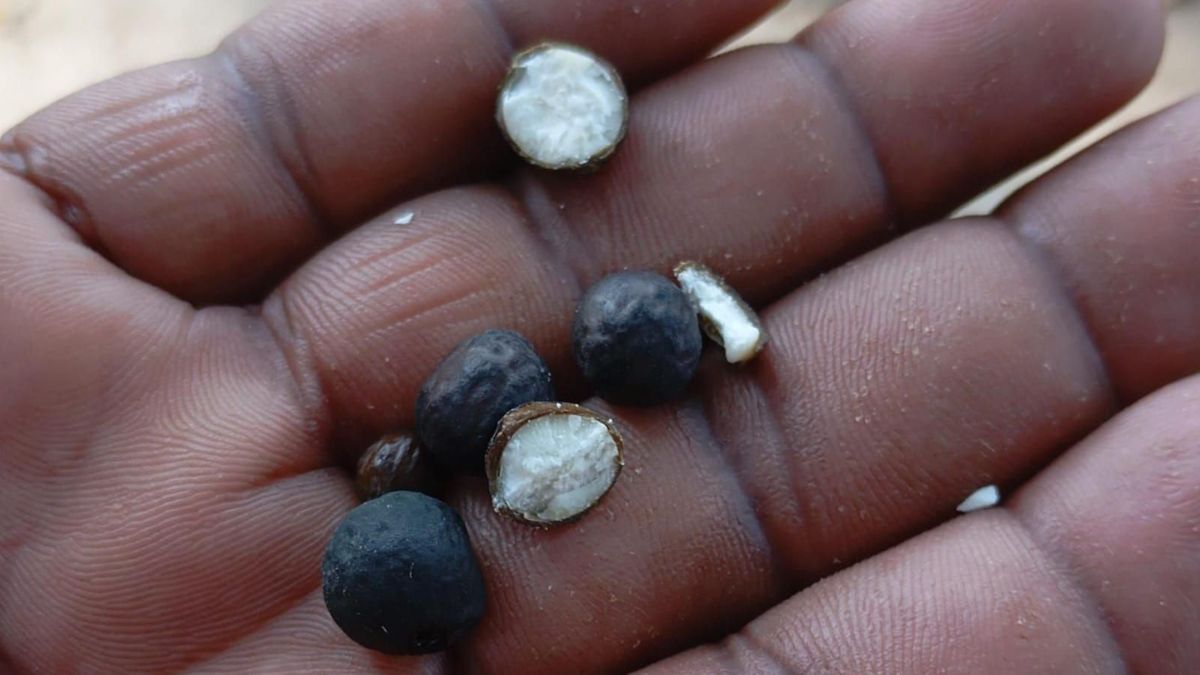TOPIC
Green Dreams & Juice Scenes: Inside MaryJays DC Weed Dispensary Juice Bar Washington Reviews

In the blurred boundaries between wellness, pleasure, and legality, MaryJays DC Weed Dispensary Juice Bar in Washington has stirred up a unique cocktail of cannabis culture and cold-pressed cool. Search the phrase “MaryJays DC weed dispensary juice bar Washington reviews” and you’ll tumble into a rabbit hole of enthusiasm, surprise, a few cautionary tales, and an undeniable current of curiosity. This isn’t just another head shop slinging ounces behind shaded glass; it’s a vibe. A movement. A leafy lifestyle laced with lemon ginger shots and THC-infused creativity.
So what’s the real story behind MaryJays? Let’s step past the neon signage and Instagram filters to see why this hybrid dispensary-juice bar is commanding both hype and critique in equal measure.
🌿 The Hybrid Hustle: Dispensary Meets Juice Culture
Washington, DC’s unique cannabis laws — where gifting, not selling, weed is the legal loop — have created a Wild West of ingenuity. And MaryJays might just be the sherpa of this new frontier.
Their formula? Simple, yet disruptive:
-
You “buy” an overpriced juice or smoothie,
-
In return, you get a cannabis gift (flower, edible, or concentrate),
-
Walk out healthier and higher.
Now pause. That alone would earn street cred. But the MaryJays DC weed dispensary juice bar Washington reviews echo something deeper. A sense of curated community and bold branding that’s made this shop a staple in the local wellness and canna-scenes alike.
🍹 Menu Breakdown: From Kale Hits to Kush Kicks
At first glance, the bar side of MaryJays looks like a Whole Foods smoothie counter on acid (literally, maybe). We’re talking activated charcoal, blue spirulina, and of course, a cheeky wink toward cannabis-laced enhancements.
Popular juice names include:
-
“Purple Haze Elixir” – A beet-based energizer paired with a sativa freebie.
-
“Green Out” – Spinach, kale, cucumber, and a chill indica.
-
“Wake & Bake Blend” – Cold brew, banana, peanut butter, and a microdose edible on the side.
The juice game is serious — legit ingredients, flavor balance, and health-forward. But make no mistake: it’s the weed that keeps people coming back. You’re not paying $40 for a smoothie out of love for chlorophyll.
🌆 Location, Aesthetic, and Ambience
Perched in the heart of DC’s gentrifying yet still gritty corridor, MaryJays manages to feel equal parts underground club and boutique wellness center.
Inside, it’s vibey:
-
Neon signs screaming “Stay Elevated” and “Juice Up, Chill Out”
-
A rotating playlist of trap, lo-fi, and old-school funk
-
Employees wearing everything from lab coats to streetwear
It’s not sterile or corporate. Think Brooklyn basement party meets yoga retreat. MaryJays DC weed dispensary juice bar Washington reviews repeatedly call out the vibe as a major pull — more “hangout” than “transaction,” more “experience” than “exchange.”
⭐ The Reviews: Cult Following or Caution Flag?
If you comb through MaryJays DC weed dispensary juice bar Washington reviews on Reddit, Google, or niche cannabis blogs, a nuanced picture emerges.
🌟 The Love Letters:
“Best experience in DC!”
“Wasn’t sure what to expect, but ended up chatting with staff for 30 mins, learning about terpenes while sipping a pineapple detox. The bud was 🔥 too. I’ll be back every trip to DC.”
“Wellness and weed? Yes please.”
“The vibe here is so dope. It’s not just about getting high — it’s about feeling good. Staff knew their stuff. Juice was A1.”
“Perfect for tourists.”
“I’m not from DC, so navigating the weed scene was overwhelming. MaryJays was transparent, friendly, and made me feel at ease.”
⚠️ The Grumbles:
“Overpriced juice, mid-tier flower.”
“$35 for a smoothie and I get a joint that wouldn’t pass in California? Nah. Cool spot, but they need to up the quality.”
“Wait times are ridiculous.”
“This place gets packed. I waited 45 mins on a Sunday afternoon. The juice bar setup slows things down compared to straight dispensaries.”
“Gimmick-y.”
“Felt like a trap. If I want weed, I don’t need kale with it. And if I want wellness, I’ll go to a real juice bar.”
This duality is what makes MaryJays fascinating — beloved by many, bewildering to some. It’s clear that MaryJays DC weed dispensary juice bar Washington reviews live in the liminal space between satisfaction and skepticism.
🔍 Legality & Loopholes: Gifting, Not Selling
Here’s the gritty truth. Cannabis is legal to possess and gift in DC, but not sell recreationally. So these hybrid setups — where juice is the real product and weed the bonus — live in a legal gray zone. It’s both clever and risky.
MaryJays has, so far, stayed on the right side of enforcement. No busts, no headline-grabbing raids. But there’s always a chance that regulation might tighten, especially as DC lawmakers push for a fully regulated market.
Still, for now, they’re operating with savvy — offering educational info on the law, warning first-timers about rules, and keeping all transactions above-board… if slightly eyebrow-raising.
🧠 Staff Knowledge & Culture
A consistent high point in MaryJays DC weed dispensary juice bar Washington reviews is the staff. Whether you’re a weed veteran or a nervous first-timer, the team is warm, knowledgeable, and (importantly) passionate.
They don’t just hand over a gift and call it a day. Expect:
-
Tips on strains for mood vs pain vs sleep
-
Explanations of cannabinoids and terpenes
-
Advice on microdosing and THC:CBD ratios
-
Recos for your vibe or occasion
It’s not transactional — it’s almost therapeutic. One reviewer even said, “Felt more like a therapy session than a weed pickup. And I left with a killer smoothie.”
🌱 Brand Identity & Social Media Clout
MaryJays isn’t just a place. It’s a brand. Their Instagram is a scroll of neon-lit juice shots, customer selfies, and viral memes. They ride cultural waves hard — from 4/20 promos to wellness trends like chlorophyll drops and CBD facials.
They’re tapping into:
-
The wellness zeitgeist: “High but healthy”
-
Cannabis normalization: No stoner stigma
-
Black-owned business support: A local DC story with cultural gravity
-
Juice aesthetic: Cold-pressed clout
If you’ve landed on MaryJays DC weed dispensary juice bar Washington reviews, chances are their marketing got to you first.
⚡ Competitors vs. Copycats
MaryJays was early to the dispensary-juice bar game, but not alone for long. The DC weed scene has exploded with creative spins on the gifting model. Still, none quite blend wellness, brand identity, and consistency like MaryJays.
Some try to copy the formula — a juice here, a kombucha there — but reviews show they fall flat. Either the juice sucks, the weed’s weak, or the staff couldn’t care less.
MaryJays remains the standard-bearer in this niche. For now.
✨ The Final Spark: Should You Go?
Here’s the lowdown, stripped and styled.
✅ Go if:
-
You want a unique, Instagram-worthy DC cannabis experience
-
You’re curious about mixing wellness with weed
-
You appreciate engaging, educated budtenders
-
You’re visiting from out of town and want a safe, stylish intro to DC’s cannabis culture
❌ Skip if:
-
You’re strictly about price and potency
-
You hate waiting in line
-
Juice isn’t your jam (literally)
-
You’re expecting dispensary-level strain variety
📝 Final Word on MaryJays DC Weed Dispensary Juice Bar Washington Reviews
At the intersection of THC and turmeric, cold press and cannabis, MaryJays DC stands out — bold, unfiltered, and evolving.
Is it a wellness gimmick? A genius brand play? A cultural signpost? Maybe all three. But if the MaryJays DC weed dispensary juice bar Washington reviews say anything, it’s that this place isn’t easily forgotten.
For better or worse, it’s setting the tone for what cannabis commerce might look like in the post-prohibition age: elevated, hybrid, and dripping in chlorophyll.
And hey — if you’re going to chase a high, might as well toss in some antioxidants too.
TOPIC
The Health Benefits of Pravi Celer: A Deep Dive into Its Nutritional Value

In a world where superfoods seem to pop up daily, one particular gem is making waves for its incredible health benefits: Pravi Celer. Often overlooked in favor of more mainstream options, this vibrant green veggie has a rich history and offers an impressive nutritional profile that deserves the spotlight. Whether you’re a health enthusiast or just curious about adding something new to your plate, understanding what makes Pravi Celer special can transform how you think about food and wellness. Ready to dive into this nutrient powerhouse? Let’s explore the fascinating journey of Pravi Celer and uncover why it should be on your menu!
What is Pravi Celer?
Pravi Celer, often referred to as the “true celery,” is a lesser-known variety of celery that stands out for its unique flavor and nutritional benefits. Characterized by its crisp texture and vibrant green hue, it offers a refreshing taste that can elevate any dish.
Unlike regular celery, Pravi Celer has a more robust aroma and a slightly sweeter profile. This makes it an excellent addition to salads, soups, or even smoothies.
Originating from ancient agricultural practices, this vegetable has roots in various cultures around the world. Its use spans centuries as both food and medicine, showcasing how versatile it truly is.
Beyond its culinary appeal, Pravi Celer holds significant health properties, making it not just another veggie on your plate but rather a powerhouse of nutrients waiting to be explored further.
The History and Cultural Significance of Pravi Celer
Pravi Celer, often referred to as true celery, traces its origins back to ancient civilizations. Egyptians and Greeks valued this vegetable not just for its flavor but also for its medicinal properties.
In many cultures, Pravi Celer has been associated with health and vitality. It was believed to be a symbol of strength in ancient rituals and served as an offering in various ceremonies.
During the Renaissance period, it gained popularity across Europe as culinary practices evolved. Chefs began incorporating it into dishes for both taste and nutrition.
Today, Pravi Celer remains integral in Mediterranean cuisine. Its crisp texture adds freshness to salads while boosting nutritional profiles.
As people become more health-conscious globally, the cultural significance of Pravi Celer continues to grow, bridging traditional roots with modern dietary trends.
Nutritional Breakdown of Pravi Celer
Pravi Celer is a nutritional powerhouse packed with essential vitamins and minerals. This leafy green offers a robust profile that can enhance your diet significantly.
One cup of Pravi Celer contains impressive amounts of Vitamin K, crucial for bone health and proper blood clotting. It also boasts high levels of Vitamin A, which supports vision and skin health.
Additionally, you’ll find notable quantities of Vitamin C in this vegetable. It’s vital for collagen production and boosts overall wellness.
Minerals like potassium help regulate blood pressure while magnesium plays a key role in muscle function.
The fiber content aids digestion, contributing to a healthy gut environment. Each bite brings not just flavor but also an array of benefits that nourish the body from the inside out.
Health Benefits of Pravi Celer:
Pravi Celer is a powerhouse of health benefits that can enhance your well-being in various ways.
Rich in vitamins and minerals, this leafy green offers essential nutrients like vitamin K, which supports bone health, and potassium, crucial for heart function. Incorporating Pravi Celer into your meals ensures you’re fueling your body with vital elements.
Its anti-inflammatory properties are another standout feature. Regular consumption can help reduce inflammation in the body, potentially alleviating symptoms associated with chronic conditions.
Moreover, Pravi Celer boosts the immune system by providing antioxidants that protect against free radicals. This fortifies your body’s defenses during flu season or when under stress.
Its fiber content aids digestion significantly. Improved gut health leads to better nutrient absorption and regularity—an often overlooked aspect of overall wellness.
– Rich in Vitamins and Minerals
Pravi Celer is a nutritional powerhouse, bursting with essential vitamins and minerals. This leafy green vegetable boasts high levels of vitamin K, which plays a crucial role in bone health and blood clotting.
Additionally, it contains significant amounts of vitamin A, vital for maintaining healthy vision and skin. The presence of vitamin C supports your immune system while also promoting collagen production.
Minerals like potassium are abundant in Pravi Celer as well. Potassium helps regulate fluid balance and maintain healthy blood pressure levels.
Magnesium is another key mineral found in this superfood, contributing to muscle function and energy production. With such a rich mix of nutrients, adding Pravi Celer to your meals can greatly enhance their nutritional profile.
– Anti-inflammatory Properties
Pravi Celer is celebrated for its remarkable anti-inflammatory properties. This vegetable boasts an impressive profile of antioxidants, which are essential in combating inflammation within the body.
Research indicates that compounds found in Pravi Celer can help reduce markers associated with chronic inflammation. This is particularly beneficial for those suffering from conditions like arthritis or inflammatory bowel disease.
Incorporating Pravi Celer into your meals may not only elevate flavors but also serve as a natural remedy to ease discomfort. The active phytochemicals present work synergistically to protect tissues and promote overall wellness.
Additionally, these properties contribute to heart health by reducing arterial inflammation, thus lowering the risk of cardiovascular diseases. Embracing Pravi Celer means more than just adding a nutritious ingredient; it’s about nurturing your body’s resilience against inflammatory challenges.
– Boosts Immune System
Pravi Celer is a powerhouse when it comes to enhancing your immune system. Packed with essential vitamins and antioxidants, it fortifies your body’s defenses against infections and diseases.
Vitamin C, in particular, plays a pivotal role in this process. It stimulates the production of white blood cells, which are crucial for fighting off pathogens.
Additionally, Pravi Celer contains flavonoids that further enhance its immune-boosting properties. These compounds help reduce inflammation and oxidative stress in the body.
Incorporating Pravi Celer into your diet can ensure you’re not only fighting off illnesses but also promoting long-term health benefits. A strong immune system allows you to feel better physically and mentally.
With regular consumption of this nutritious vegetable, you’re well on your way to maintaining robust health all year round. Making it a staple could be one simple change with significant results for your overall wellness.
– Aids in Digestion
Pravi Celer is a remarkable ally for your digestive health. Its high fiber content plays a vital role in promoting regular bowel movements. Fiber helps to bulk up stool, making it easier to pass through the intestines.
Moreover, Pravi Celer contains natural compounds that stimulate gastric juices. This stimulation aids in breaking down food more effectively, enhancing nutrient absorption. When digestion works efficiently, you may feel lighter and more energized.
The presence of antioxidants also contributes positively to gut health. They help reduce inflammation within the digestive tract, which can alleviate discomfort caused by bloating or gas.
Incorporating Pravi Celer into meals not only enhances flavor but provides essential support for maintaining a healthy digestive system as well. It’s a simple yet powerful addition worth considering for those seeking to improve their gastrointestinal well-being.
How to Incorporate Pravi Celer into your Diet
Incorporating Pravi Celer into your diet is both simple and enjoyable. Start by adding it to salads for a fresh, crunchy texture. Its subtle flavor complements various dressings.
You can blend Pravi Celer into smoothies too. Pair it with fruits like bananas or berries for a nutrient-packed drink that’s easy to make.
For those who love soups, try tossing some chopped Pravi Celer into the mix. It adds depth while boosting nutritional value significantly.
Another option? Use it as a garnish on grilled meats or roasted vegetables. This not only enhances the dish visually but also packs in extra health benefits.
Consider snacking on raw Pravi Celer sticks with dips such as hummus or yogurt-based sauces. This makes for a healthy snack that satisfies cravings without guilt.
Comparison to other Popular Superfoods
When comparing Pravi Celer to other superfoods like kale and quinoa, its unique nutritional profile shines through. While kale is known for its high vitamin K content, Pravi Celer offers a well-rounded blend of vitamins A, C, and various B vitamins.
Quinoa often takes the spotlight due to its protein density. However, Pravi Celer provides essential nutrients while being low in calories. This makes it an excellent choice for those looking to maintain a healthy weight without sacrificing nutrition.
Chia seeds are another popular contender with their omega-3 fatty acids. Yet, Pravi Celer stands out with its rich fiber content that aids digestion more effectively than chia seeds alone.
Incorporating this vegetable into your diet can provide benefits not found in these other superfoods. It’s versatile and easy to add to meals while enhancing overall health.
Conclusion
Pravi Celer stands out as a remarkable addition to the world of nutrition. Its rich history and cultural roots make it more than just another superfood; it’s a symbol of health and wellness across generations. Packed with essential vitamins and minerals, Pravi Celer offers numerous health benefits that can enhance your overall well-being.
Incorporating this vibrant green vegetable into your diet is not only easy but also rewarding. Whether you choose to toss it in salads, blend it into smoothies, or sauté it with other vegetables, there are countless ways to enjoy its unique flavor while reaping its nutritional rewards.
As we explore various superfoods available today, Pravi Celer holds its own against popular contenders like kale and quinoa. Its anti-inflammatory properties and immune-boosting capabilities set it apart as an invaluable ally in maintaining good health.
Embracing Pravi Celer is about more than just individual health; it’s about connecting with nature’s bounty and celebrating the foods that nourish us from within. So why not give this nutrient powerhouse a try? Your body will thank you for it!
TOPIC
The Rise of Insoya: Why This Superfood is Taking the Health World by Storm

soya. A powerhouse of nutrition, this superfood has its roots deeply embedded in traditional practices while being elevated to modern culinary stardom. As consumers become more conscious about their diets and the impact of their food choices, Insoya emerges as an appealing solution packed with benefits. Curiosity piqued? Let’s dive into what makes this nutrient-dense ingredient so special and why it’s capturing the attention of wellness enthusiasts everywhere.
Nutritional Benefits of Insoya
Insoya is packed with nutrients that can boost your health. This superfood is rich in protein, making it an excellent choice for vegans and vegetarians looking to increase their intake.
Loaded with fiber, Insoya aids digestion and keeps you feeling full longer. It’s a great option for those aiming to manage their weight or maintain steady energy levels throughout the day.
Vitamins and minerals abound in Insoya. You’ll find essential nutrients like iron, calcium, and B vitamins which support various bodily functions. These components contribute to stronger bones and improved metabolism.
Omega-3 fatty acids are another highlight of this superfood. They play a crucial role in heart health by reducing inflammation and promoting better cholesterol levels.
Including Insoya in your diet can also help balance blood sugar levels, making it beneficial for those managing diabetes or insulin sensitivity. With so many perks, it’s no wonder Insoya is gaining attention!
How to Incorporate Insoya into your Diet
Insoya is a versatile ingredient that can easily fit into various meals. Start your day with an Insoya smoothie. Blend it with fruits, yogurt, and a splash of almond milk for a nutritious breakfast.
For lunch, consider adding Insoya to salads or grain bowls. Toss cooked Insoya beans in with quinoa, fresh vegetables, and a zesty dressing for an energizing meal.
Snack time? Roasted Insoya makes for a crunchy alternative to traditional chips. Season them with spices of your choice to enhance the flavor.
Dinner can also benefit from this superfood. Use Insoya as a meat substitute in tacos or stir-fries. Its texture absorbs flavors beautifully while providing protein-rich nourishment.
Don’t forget about baking! Incorporate ground Insoya flour into pancakes or muffins for added nutrients without compromising taste.
The Growing Popularity of Insoya in the Health Community
Insoya is making waves across health forums and social media platforms. Its unique profile has captured the attention of nutritionists, fitness enthusiasts, and food bloggers alike.
As people seek alternatives to traditional protein sources, Insoya stands out for its impressive amino acid composition. Many are excited about its versatility in various recipes, from smoothies to salads.
Health influencers regularly highlight Insoya’s benefits in their content. This growing buzz has led to a surge in demand at grocery stores and online marketplaces.
Moreover, sustainability advocates appreciate Insoya for its lower environmental footprint compared to animal-based proteins. The combination of health benefits and eco-friendliness appeals strongly to today’s conscious consumers.
As more studies emerge showcasing its nutritional advantages, it’s likely that this trend will only gain momentum within wellness circles.
The Environmental Impact of Insoya Production
Insoya production is emerging as a sustainable alternative in the agricultural landscape. This superfood is primarily derived from sustainably cultivated soybeans, making it an eco-friendly choice for health enthusiasts.
The cultivation process often utilizes less water compared to traditional crops. This efficiency helps conserve vital resources in regions where water scarcity is a concern. Moreover, Insoya farming promotes soil health through crop rotation and reduced chemical inputs.
Additionally, many producers are committed to responsible land use practices. This includes preventing deforestation and protecting biodiversity, which benefits both local ecosystems and global climate efforts.
However, it’s essential to scrutinize sourcing methods carefully. Not all Insoya products guarantee environmentally friendly practices. Consumers should seek out certified brands that prioritize sustainability for truly impactful choices in their diets.
Criticisms and Controversies Surrounding Insoya
Despite its rising popularity, Insoya is not without criticism. Some health enthusiasts question the nutritional claims surrounding this superfood. They argue that while it offers various benefits, these might be overstated when compared to more traditional sources of protein.
Additionally, concerns have been raised regarding the sourcing and production methods of Insoya. Critics highlight potential environmental impacts associated with large-scale cultivation. The conversion of natural habitats for farming poses risks to biodiversity.
Furthermore, some skeptics point out that dietary fads often lead to misinformation. This can create unrealistic expectations around weight loss or health improvements solely from incorporating a single food item like Insoya into one’s diet.
As people become more conscious about their food choices, transparency in sourcing and production practices will be essential for gaining trust within the community.
Conclusion and Future Outlook for Insoya
As the health world embraces new trends, Insoya stands out as a remarkable superfood. Its origins rooted in traditional practices have paved the way for modern nutritional exploration. With its impressive profile of vitamins, minerals, and plant-based protein, Insoya is an attractive option for those looking to enhance their diets.
The growing popularity of Insoya among health enthusiasts reflects a broader shift towards conscious eating. Individuals are increasingly aware of not just what they consume but also where it comes from. This superfood’s potential environmental benefits only add to its allure.
However, like any emerging trend, there are criticisms and controversies that deserve attention. It’s essential to navigate these discussions critically while appreciating the positive changes this ingredient can bring about.
Looking ahead, Insoya is poised for continued growth within both culinary circles and nutrition science. As more studies emerge showcasing its benefits and versatility in recipes, it’s likely that we’ll see even greater integration into mainstream diets worldwide. The future seems bright for those seeking nutritious alternatives that align with their values and wellness goals.
TOPIC
Bntamnh E Uncovered: What You Need to Know

Introduction to Bntamnh E
Have you ever stumbled upon something that piqued your interest yet left you curious for more? Enter Bntamnh E, an intriguing topic that’s capturing the attention of many. Whether you’re a health enthusiast or simply someone looking to enhance your daily routine, understanding this unique element is essential. From its origins steeped in history to its modern-day applications, Bntamnh E holds numerous secrets waiting to be uncovered. Get ready to dive deep into everything about Bntamnh E and discover how it can transform your life!
The Origins and History of Bntamnh E
Bntamnh E traces its roots to ancient traditions, where it was revered for its unique properties. Cultures across various regions have utilized this remarkable substance in diverse ways throughout history.
The term “Bntamnh” itself is thought to derive from local dialects that emphasize natural healing and wellness. Early practitioners recognized the potential benefits long before modern science began validating these claims.
Historical texts reveal how Bntamnh E played a crucial role in rituals and daily life. Its applications ranged from medicinal uses to cultural ceremonies, showcasing a deep connection with the land and community practices.
As time progressed, knowledge of Bntamnh E spread beyond its origins. The advent of global trade allowed this powerful resource to reach new audiences, sparking interest among those seeking alternatives in health and wellness.
Unique Features and Characteristics of Bntamnh E
Bntamnh E stands out in a world saturated with health supplements. Its formulation is both innovative and carefully balanced, capturing the essence of nature’s best offerings.
One notable characteristic is its rich antioxidant content. These compounds work diligently to combat oxidative stress, promoting overall well-being.
Another unique aspect is its adaptogenic properties. Bntamnh E can help the body manage stress more effectively, enhancing resilience during challenging times.
The texture sets it apart too—smooth yet potent. Users often appreciate how easily it blends into various recipes, making incorporation into daily life effortless.
The sourcing of ingredients for Bntamnh E emphasizes sustainability and ethical practices. This commitment resonates with eco-conscious consumers looking for products that align with their values.
Benefits and Uses of Bntamnh E
Bntamnh E offers a range of fascinating benefits that make it increasingly popular among wellness enthusiasts. This potent compound is known for its antioxidant properties, which help combat oxidative stress in the body.
Incorporating Bntamnh E into your diet can enhance overall health. Many users report improved skin elasticity and hydration, making it an attractive option for skincare routines. It’s often found in serums and creams aimed at reducing signs of aging.
Beyond beauty, Bntamnh E may assist with boosting energy levels and improving mood stability. Its unique chemical composition has been linked to increased mental clarity as well.
Fitness aficionados also appreciate its potential role in recovery post-exercise. By reducing inflammation, Bntamnh E supports quicker muscle repair and rejuvenation after strenuous workouts.
Whether consumed through supplements or applied topically, this versatile ingredient integrates seamlessly into various lifestyles.
How to Incorporate Bntamnh E into Your Daily Routine
Incorporating Bntamnh E into your daily routine can be simple and enjoyable. Start your mornings by mixing a few drops of Bntamnh E oil into your favorite smoothie or juice. It adds a subtle flavor while boosting nutritional value.
For those who enjoy cooking, consider using it as an ingredient in salad dressings. A teaspoon mixed with olive oil and vinegar creates a delicious dressing packed with benefits.
If you’re more into skincare, look for creams that contain Bntamnh E or blend the oil directly into your moisturizer. This can enhance hydration and promote healthier skin.
You might also try adding it to bathwater for a soothing experience after a long day. Just remember to test small amounts first to see how your body reacts before fully integrating it.
Potential Risks and Precautions to Consider
While Bntamnh E offers numerous benefits, it’s essential to be mindful of potential risks. Each person’s body reacts differently to new substances, so it’s wise to start with a small dosage.
If you have underlying health conditions or are pregnant, consulting a healthcare professional is crucial. Some individuals may experience mild side effects such as digestive discomfort or allergic reactions.
Another consideration is the quality of products available in the market. Not all sources provide authentic Bntamnh E. Always research and choose reputable brands that prioritize transparency and safety.
Keep an eye on how your body responds after introducing Bntamnh E into your routine. This awareness allows for informed decisions about its continued use or adjustment of dosages if necessary.
Where to Find Authentic Bntamnh E Products
Finding authentic Bntamnh E products can be a bit of a treasure hunt. Start by exploring local health food stores and specialty shops that focus on natural ingredients. They often carry high-quality selections.
Online retailers are another great option. Websites dedicated to wellness products frequently stock Bntamnh E, ensuring you have access to various brands and formulations.
Always check for certifications or third-party testing, which can verify the product’s authenticity. Additionally, reading customer reviews will give insight into the effectiveness of the item.
Social media platforms also offer a wealth of information. Many brands promote their goods through Instagram or Facebook, where you can find exclusive deals or limited editions directly from manufacturers.
Connecting with online communities focused on health and nutrition could lead to recommendations for trusted sources selling genuine Bntamnh E products.
Conclusion: Embracing the Power of Bntamnh E
As the exploration of Bntamnh E unfolds, its significance becomes clearer. This remarkable entity is more than just a trend; it embodies a blend of history, unique properties, and numerous benefits that can enhance daily life.
Whether you’re intrigued by its origins or eager to reap its advantages, incorporating Bntamnh E into your routine may offer exciting possibilities. It’s essential to remain informed about potential risks while seeking authentic sources for products.
Embracing Bntamnh E means opening doors to new experiences and health benefits. As you delve deeper into this fascinating subject, you’ll likely find ways it can fit seamlessly into your lifestyle. The journey with Bntamnh E could very well lead you toward enhanced well-being and enriched living.
-

 BUSINESS6 months ago
BUSINESS6 months agoBoost Your Brand with adsy.pw/hb3 Digital Solutions
-

 BUSINESS7 months ago
BUSINESS7 months agoTransform Your Business with MyWape
-

 TOPIC6 months ago
TOPIC6 months agoHow Appfordown Simplifies Your App Experience: Tips and Tricks
-

 TOPIC5 months ago
TOPIC5 months agoHow ATFBoru is Shaping Online Interaction in Unique Ways
-

 TOPIC7 months ago
TOPIC7 months agoWhy Wepbound is Revolutionizing the Way We Connect Online
-

 TOPIC6 months ago
TOPIC6 months agoSpeedyShort.com: Tips and Tricks for Effective Link Sharing
-

 TOPIC7 months ago
TOPIC7 months agoBehind the Screen: The Stories and Secrets of m0therearf
-

 TOPIC6 months ago
TOPIC6 months agoSimpcitt Decoded: Unlocking the Meaning Behind the Buzz
